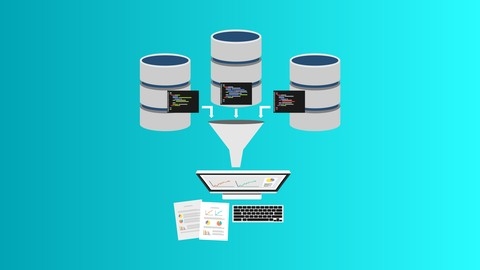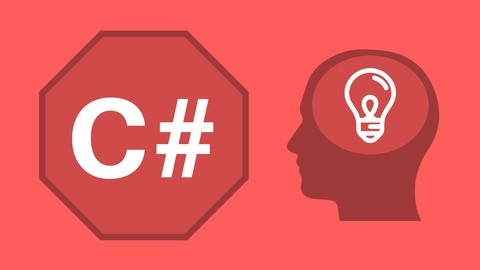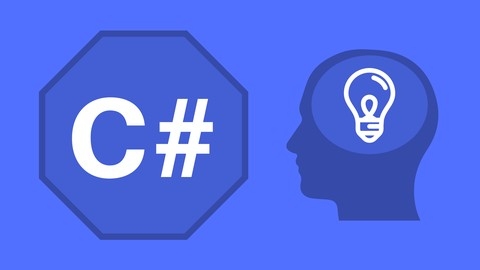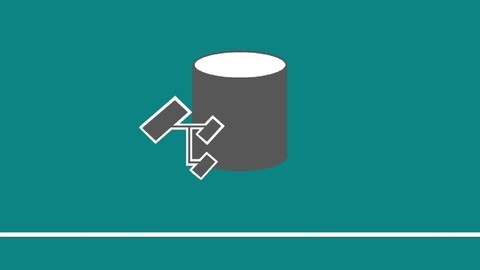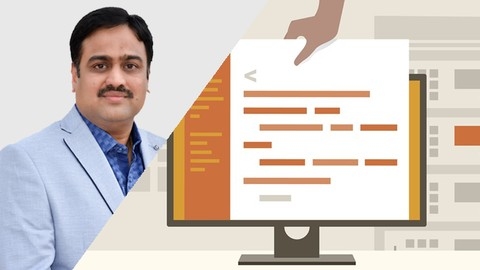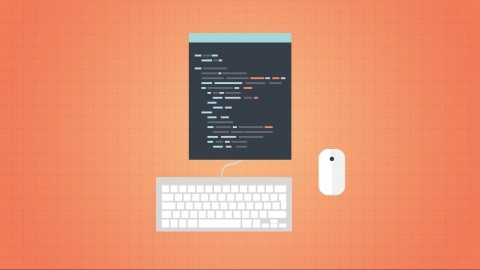LINQ (Language Integrated Query) is a powerful set of features in C# and .NET that allows you to query and manipulate data from various sources, such as databases, XML documents, and collections, using a unified syntax.
Mastering LINQ can significantly improve your productivity and efficiency as a C# developer, enabling you to write cleaner, more concise, and expressive code for data manipulation tasks.
By learning LINQ, you can streamline your data access operations and unlock new possibilities for working with data in your applications.
Finding the right LINQ course on Udemy, however, can be a challenge, with numerous options vying for your attention.
You want a course that not only covers the fundamentals but also delves into advanced concepts and provides practical examples to solidify your understanding.
You’re looking for a comprehensive learning experience that will equip you with the skills and knowledge you need to effectively leverage LINQ in your projects.
Based on our thorough analysis of various LINQ courses available on Udemy, we highly recommend Mastering LINQ with C# and .NET as the best overall course.
This comprehensive course covers everything from the basics to advanced techniques, providing a solid foundation in LINQ principles and practical applications.
You’ll learn how to use LINQ to query databases, manipulate collections, and work with XML data, making it an excellent choice for developers of all levels.
While Mastering LINQ with C# and .NET stands out as our top pick, there are other excellent LINQ courses available on Udemy that cater to different learning styles and preferences.
So, keep reading to explore our curated list of recommendations and find the perfect LINQ course that aligns with your specific needs and goals.
Mastering LINQ with C# and .NET
This course will teach you everything you need to know about LINQ, from the basics to advanced techniques.
You will start with the fundamentals of LINQ, including how it works and the important role of the IEnumerable interface.
You will gain hands-on experience using LINQPad, a powerful tool for exploring LINQ queries.
As you progress, you’ll delve into various LINQ operators that enable you to manipulate data effectively.
You’ll learn how to use operators like Select and Where to filter and transform data, as well as OrderBy and GroupBy to arrange data according to your needs.
The course also covers advanced operators such as Join and GroupJoin for combining data from multiple sources.
You’ll explore powerful techniques for working with databases using LINQ.
You’ll discover how expression trees and the IQueryable interface bridge the gap between your code and database queries.
The course also introduces Entity Framework, a popular tool that simplifies database interactions using LINQ.
Finally, you’ll learn how to leverage the power of parallel processing with Parallel LINQ, using techniques like AsParallel and ParallelQuery to significantly boost the speed of your data operations.
You’ll also explore additional tools and libraries that enhance your LINQ experience, including LINQ to XML for working with XML data, and popular extensions like MoreLINQ, which provides even more functionality for working with data.
You’ll even discover how tools like ReSharper and Rider can streamline your LINQ coding.
C# Advanced Topics - The Next Logical Step
This course starts with the fundamentals of LINQ, explaining its purpose and applications.
You’ll become proficient in writing LINQ queries on objects, mastering methods like “Where,” “Select,” and “Sorting” to manipulate data effectively.
The course dives into practical examples, demonstrating how to apply these methods in real-world scenarios, like filtering customer lists or analyzing sales data.
You’ll explore powerful C# features that enhance your coding efficiency.
You’ll learn how to write concise and reusable code using lambda expressions with LINQ.
The course demystifies concepts like generics and delegates, showing you how to build flexible and adaptable methods.
You’ll understand how to create generic methods and classes that work with various data types, making your code more efficient.
This course goes beyond the basics, delving into advanced C# concepts.
You’ll uncover the power of asynchronous programming with the “Task” class and the “async” and “await” keywords.
You’ll discover how to use these features to build responsive applications that handle long-running tasks without interrupting the user experience.
The course uses practical examples and provides source code, allowing you to apply what you learn and develop efficient, elegant C# code.
The Ultimate LINQ with C# Masterclass - Basics to Advanced
You will start with the basics, learning what LINQ is and how to use it.
You will discover IEnumerable, a key concept for understanding LINQ.
You’ll then explore how to write queries to filter, sort, and manipulate data, practicing with real-world examples and exercises that reinforce your learning.
As you progress, you will master grouping data with LINQ, using techniques to organize data into meaningful categories, like grouping customers by region to calculate average purchase amounts.
You will then learn how to join data from different sources, a crucial skill when working with complex datasets.
The course covers various types of joins, including inner joins for combining matching data and outer joins for including all data from one source.
You will gain hands-on experience using LINQPad, a valuable tool that allows you to test your queries and see the results immediately.
Next, you will delve into the method syntax of LINQ, also known as lambda expressions, a more concise and expressive way to write queries.
You’ll use lambda expressions to filter data based on specific criteria, such as selecting all orders above a certain value, and to sort data in ascending or descending order.
The course guides you through advanced LINQ capabilities such as generating sequences of numbers using Enumerable.Range, essential for tasks like creating unique identifiers.
You’ll learn to compare collections for equality and perform set operations like Distinct, Intersect, Union, and Except to identify unique items or find common elements.
You will also explore quantifying operations, like checking if all elements in a collection meet specific criteria or if any element satisfies a condition.
You will learn how to partition collections, dividing them into smaller chunks based on specific rules.
Finally, you will learn how to combine data from multiple collections using concatenation and perform aggregation operations.
LINQ Tutorial: Master the Key C# Library
This LINQ tutorial guides you through mastering this powerful C# library.
You begin by setting up your coding environment with Visual Studio Community.
The tutorial then introduces you to the fundamentals of LINQ, including lambda expressions and extension methods, and how they form the foundation for working with data in C#.
You’ll understand the core concept of deferred execution and how it impacts the efficiency of your code.
You’ll then explore a wide array of LINQ methods like Any, All, OrderBy, Where, Select, and GroupBy, mastering their use through practical coding exercises and refactoring challenges.
You’ll learn how to filter, sort, transform, and group data efficiently using these operators.
The course doesn’t shy away from advanced concepts either – you’ll delve into topics like collection type changes using methods like ToArray, ToList, ToDictionary, and AsEnumerable, giving you a comprehensive understanding of data manipulation in C#.
The tutorial also introduces you to query syntax, providing you with an alternative way to write LINQ queries.
You’ll discover how to achieve the same results with different syntax, enhancing your coding versatility.
Finally, the course ensures you’re up-to-date with the latest advancements by discussing LINQ updates in .NET 6, equipping you with the most current knowledge for your C# development journey.
LINQ in C#: A Beginner’s Guide
This course thoroughly explains how LINQ works in C#, a potent tool for managing data.
You begin with the fundamentals, grasping what LINQ is, its benefits, and the two ways to write LINQ queries: query syntax and method syntax.
As you progress, you will delve into various LINQ operators for filtering, projecting, sorting, and grouping data.
You’ll gain practical experience working with C# objects, even learning to create your own custom types.
The course then introduces LINQ to Entities, teaching you how to use LINQ with databases using Entity Framework Core.
You’ll connect to a SQLite database, create models, and learn how to perform queries using LINQ.
Further on, you’ll explore LINQ to XML and master reading, writing, and manipulating XML data using LINQ.
Finally, you will discover how to create, parse, and query JSON data with LINQ to JSON.
The course covers different techniques for working with JSON, from manual and declarative creation to using LINQ for these tasks.
You’ll also learn how to query JSON using both LINQ and select tokens.
Complete Practical LINQ Tutorial in C#
You begin with the fundamentals of LINQ, such as extension methods and the role of IEnumerable, and progress to implementing your own LINQ extensions.
You’ll master essential LINQ operators like Select, Where, and OrderBy, gaining the ability to filter, sort, and transform data with ease.
The course covers both query syntax and lambda expressions, enabling you to choose the optimal approach for different scenarios.
You’ll delve into advanced concepts like deferred execution, which optimizes data processing for large datasets.
You’ll learn to navigate potential pitfalls like multiple enumeration and explore techniques for modifying lists using LINQ.
The course then guides you through generating data streams using methods like Empty, Range, and Repeat, culminating in the creation of your own custom generators.
You’ll discover how to perform complex data operations like joining, grouping, and aggregating, empowering you to analyze data from multiple perspectives.
You’ll become proficient in using methods like GroupBy, Join, and GroupJoin to consolidate and compare data.
Moreover, you’ll learn to calculate values using aggregation methods such as Min, Max, Sum, and Average.
The course further explores techniques for converting data into various formats using methods like ToArray, ToList, ToDictionary, and ToLookup.
You’ll delve into LINQ to XML, acquiring the skills to create, read, and manipulate XML documents effectively.
Finally, the course culminates with a deep dive into LINQ to Entities, teaching you how to leverage LINQ for seamless database interactions.
LINQ from Basic to Advanced
This course starts by building a solid foundation with the core components of LINQ, like C# language extensions, anonymous types, and extension methods.
You’ll quickly gain the confidence to write efficient queries using both LINQ syntax and the flexibility of lambda expressions.
This course goes beyond the basics, giving you the skills to work with your custom collections and interact with databases.
You’ll learn how to use LINQ to SQL to perform everyday database tasks like creating, reading, updating, and deleting data.
The course dives into more advanced database techniques like using joins, handling those tricky concurrency issues, and using stored procedures to keep your data running smoothly.
You’ll become comfortable with LINQ to DataSet and LINQ to XML, gaining the skills to work with datasets and XML documents efficiently.
This course arms you with the knowledge to tackle real-world challenges.
You’ll see how concepts are applied through a complete sample project, giving you the chance to put everything you’ve learned into practice.
This course doesn’t just teach you LINQ; it equips you to confidently use it in your projects.
LINQ to XML Tutorial
This course teaches you how to use LINQ to XML to interact with data stored in XML format.
You begin by learning how to create XML documents directly from data stored in your program’s memory.
From there, you learn how to query these XML documents, so you can find the exact information you need.
Once you’ve mastered finding data, the course teaches you how to modify its structure and content.
This includes adding or removing elements, changing attribute values, and ensuring your XML documents are well-formed and valid.
You learn how to transform XML data into other useful formats like CSV for spreadsheets or HTML for web pages.
This is essential for sharing data between different applications.
You even discover how to transform data from one XML format to another, which is useful when dealing with different data standards.
Finally, you learn how to validate XML documents against an XSD.
This ensures that your XML data adheres to specific rules and requirements, which is essential for data integrity and exchange between systems.
This course equips you with in-demand skills in XML manipulation using LINQ to XML, a powerful technology for working with XML data.
You gain the confidence to tackle real-world data manipulation tasks, making you a more versatile and valuable developer.
